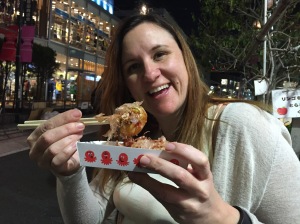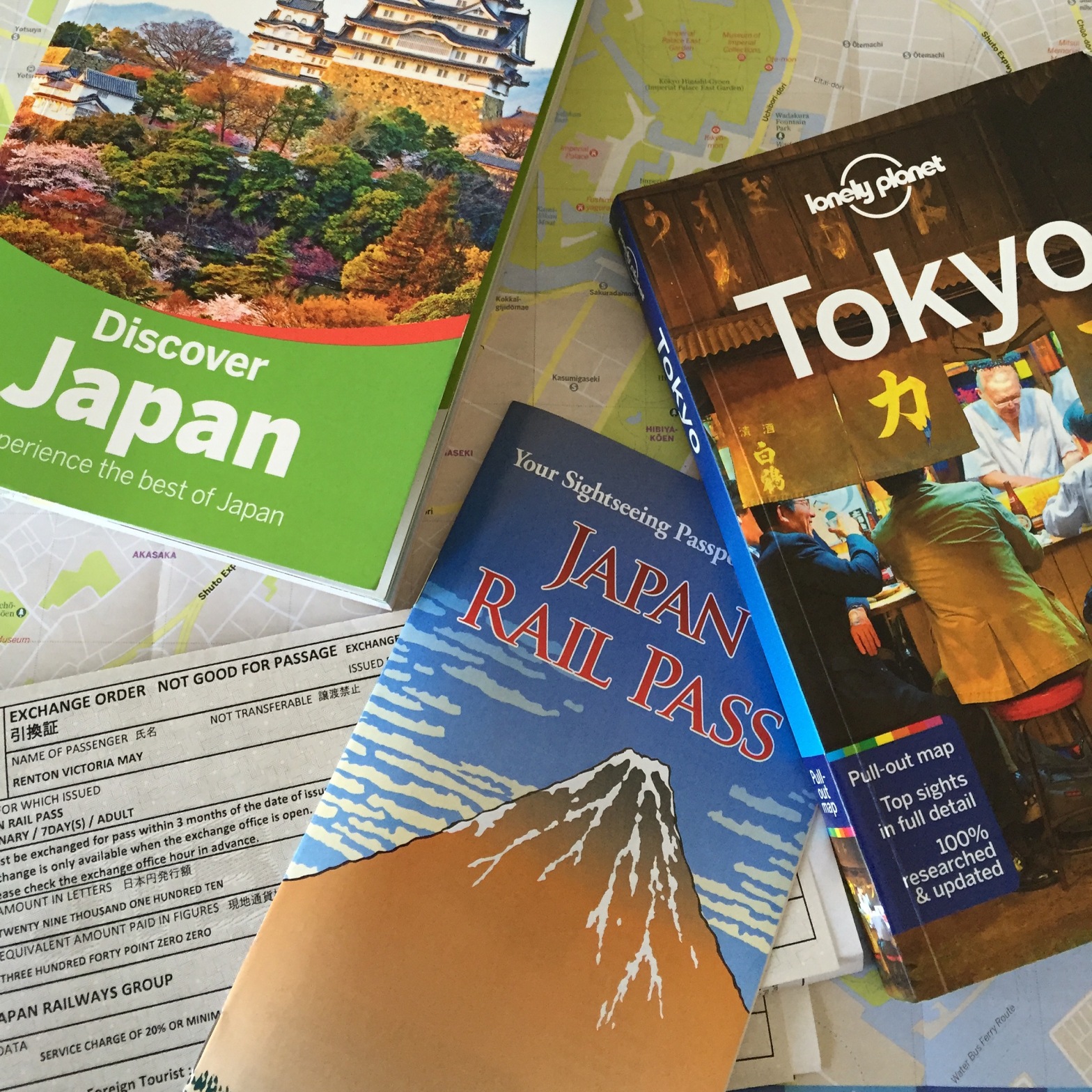
I like to think I know what I am doing, but man, planning a trip to Japan was a humbling experience. Where to stay? How to get around the country? What is a Japan Rail Pass and is it worth it for a 10 day trip? What the heck is a “Hakone Free Pass”? Why is the Imperial Palace not on any of the “Top Ten Tokyo Sites” lists? These are some of the questions that I faced and I spent a lot of time researching and planning my epic adventure and will share my findings with you in my series of posts on Japan. I hope the following series will help you plan your trip to Japan or if you are a tourism student, plan a FIT for a client. Regardless, I would love to hear any other bloggers opinions or advice on planning a trip to Japan, if you feel I have left something out.
My first post in the series looks at:
Steps for Planning a Trip to Japan.
1. Figure out how much time you have. If you only have a week on the ground, this limits your overnight options significantly. We had 11 travel days in total. 8 full days (9 nights) on the ground and this gave us enough time to have 3 different overnights. We spent 5 nights in Tokyo, 1 Night in Hakone, 3 nights in Kyoto. I felt Tokyo (5) was just right, Hakone (1) was just right but Kyoto (3) was too short. I would say you need at least 4 nights in Kyoto.

2. Buy a good Travel Book on Japan. We had the Lonely Planet Guide. I actually bought three different companies books but the Lonely Planet “Discover Japan” was the best. Some of you may think you can find everything online, I found the book was my go to first source for information.
3.Decide on a Budget and stick to it. When people think of travel to Japan, they think expensive, I say, not true. I used points for eight nights of my hotels but otherwise paid for flights and all other expenses. We ate locally, used public transit and came in with final per person costs of $1000 for flights on Air Canada. $330 for Japan Rail Pass. $40 for Hakone Free Pass. $30 for other transportation. $400 for our Traditional Ryokan. (This included Dinner and Breakfast and was by far the most expensive part of the trip.) Breakfast was around $8 Lunch around $8 and Dinner was anything from a $5 Tako Yaki to $20 for more sushi than you can dream of. Most attractions are free of charge and other than a Walking Tour of Tokyo ($100) and a Cooking Lesson ($90) the rest was spent on shopping.

4. Look at the time of year you want to travel we were there right smack in the middle of cherry blossom season (end of March beginning of April) and I can’t imagine a better time to be there. A lot of the pleasure we found for free in Japan was likely due to the tremendous beauty at this time of year. We also found the outdoor eating atmosphere incredibly fun and inexpensive. I am quite sure it would have been different if we had gone in the middle of winter or summer I do understand that the fall is a beautiful time of year to travel to Japan as well but as far as I am concerned after being in Japan during the Cherry Blossom season, this is THE time to go. Yes there were crowds, but never so many that it took away from the atmosphere.
5.Decide on what you hope to see and do. Fashion? History? Culture? Nature? Wildlife? Food Experiences? For us it was all of the above and but thinking about what we really wanted to do helped us plan an itinerary that was a good balance between all of our interests. Travel experiences do not just happen like an amusement park ride. Sometimes you have to put research into what you really want. I am often asked questions about Travel options that would require hours of research. We are such an instant gratification kind of society now, good travel experiences take a bit of time and effort, you can do it!
6.Pull it all together. You have figured out how much time you can spare, read a great travel book, figured out a budget, determined your season of travel and decided what your interests are. Now its time to pull it together. For us, as it was our first trip to Japan our itinerary looked like this:
Day One: Depart Toronto (lose a day crossing the date line)
Day Two: Arrive Tokyo at 3:40 ( Arrive at hotel at 6:00PM by bus)
Day Three: Tokyo – Walking Tour of Tokyo (8 hours) Visit: The Tsukiji Fish market, Asakusa, Akihabara, Yanaka.

Day Four: Tokyo– Cooking Lesson in the morning. Afternoon exploring. Shibuya – Shinjuku
Day Five: Tokyo-Meji Shrine. Harajuku. Ueno Park for Hanami Viewing
Day Six: Tokyo-Free Day to go back to places we loved.
Day Seven: Leave Tokyo at 7:00 for Hakone. Arrive at Hakone at 10:00 AM. Try Onsen and Traditional Ryokan. See Mt Fuji.
Day Eight: Hakone- Kyoto. Afternoon stroll along the Path of Philosophy in Kyoto.
Day Nine: Kyoto- Arashiyama. Bamboo Grove. Arashiyama Monkey Park. Evening stroll through Gion. Dinner in Maruyama-koen under the Cherry Blossoms
Day Ten: Kyoto – Early morning departure for Nara. Hall of Great Budda, Deer Park. Afternoon visit at Nijiki Market in Kyoto.
Day Eleven: Kyoto- Tokyo – Toronto. Bullet Train to Tokyo, Local train to Haneida. Flight to Toronto. Arrive home. (ALL in one day due to time zones)
There are so many other options for Japan, but for a first time visit this seemed like the best for us. If you have less time. Leave out Hakone as it takes up two days. Quite a few travellers we ran into were only there for 7 nights. This is not nearly enough. Their itineraries basically were 4 nights Kyoto and 3 nights Tokyo. I would say that if you can swing it you need two weeks. That way you could also visit Hiroshima if you are interested in Military History and perhaps Matsumoto to see the castle. But what can you do, time is limited for most of us, I get that. Just DO NOT OVER SCHEDULE YOURSELF. Because trust me, along the way you will get distracted by beautiful surprises, gorgeous views and fantastic travel experiences that can’t be rushed.
Next Post; 5 Days in Tokyo. What to see, where to stay, getting around, what to expect.


Nice post 🙂 i love Japan!! Thank you
LikeLiked by 1 person
Is planning a trip to Japan more difficult than for visiting other countries? I think you made a good plan and a nice itinerary! You saw a lot!
I’m interested in reading your next post on Tokyo, since I live here!
(Please feel free to visit, and comment on, my blog: http://tokyo5.wordpress.com )
LikeLiked by 1 person
Hi Tokyo 5!
I found Japan to be the most challenging destination for planning that I have visited yet. That said, once I got to Japan it was amazing, efficient and really easy. The planning stage was much more difficult than the travel stage, travelling in Japan was incredible.
LikeLiked by 1 person
Yes, I think Japan is very convenient, safe, and polite. Though I’m originally from America, I’m not so used to it anymore. I rarely have a chance to visit America…and on my most recent trip to Florida, I didn’t think it was convenient for visitors (though Florida’s biggest income is from tourism) because of lack of public transportation, no pictures on restaurant menus, confusion on who to tip and how much, lack of public payphones (and American payphones aren’t easy to use!), etc.
Thank you.
LikeLike
I really appreciated the way you speak to both the traveller and travel professional. I also find tremendous value in the time lines and the details you provide, thank you. Great Blog, looking forward to reading more.
LikeLiked by 1 person
Wow!! its absolutely amazing girl… Waiting for more …
Your Lovely Sheridan Student
LikeLiked by 1 person